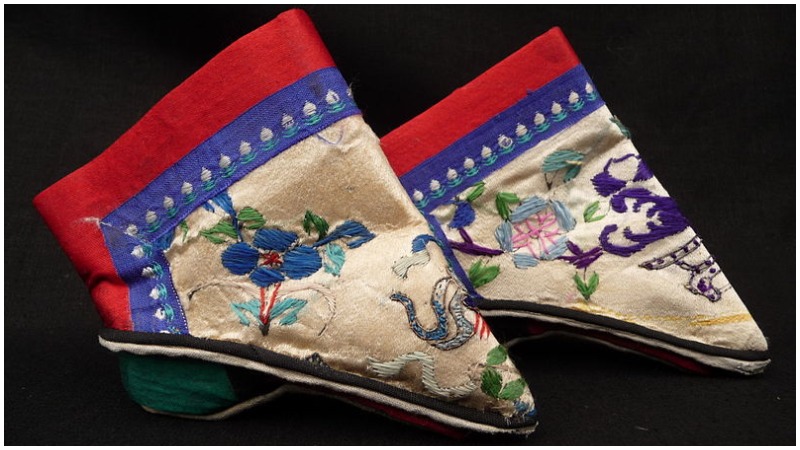Most people around the world use their body to express their cultural, religious, or ethnic identity, or their social status.
Troughout history and to this day, some of the practices used on the body may appear violent and weird but in a certain cultural frame, they represent a symbol of beauty, and within some cultures, beauty is everything.
In China, for over a millennium, millions of women were willing to go through the excruciating practice of foot-binding, considered by many as one of the most dangerous fashion trends in history.
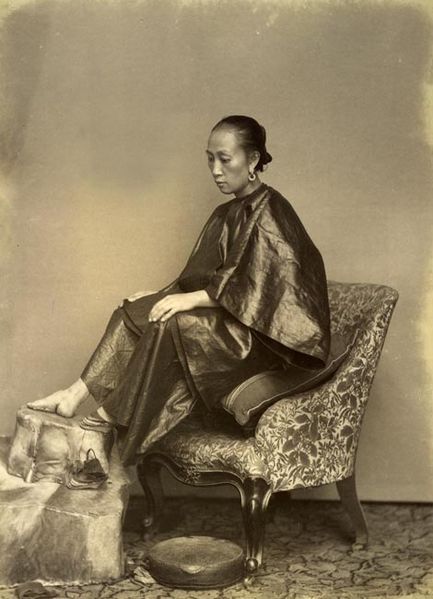
The custom appeared during the 10th century and it is said that it was inspired by a court dancer Yao Niang who bound her feet in the shape of the new moon and danced on her toes inside six-foot golden “lotus shoes” in front of the Emperor Li Yu.
The dance fascinated the Emperor and the other concubines who wanted to impress as well, tried to imitate Yao Niang.
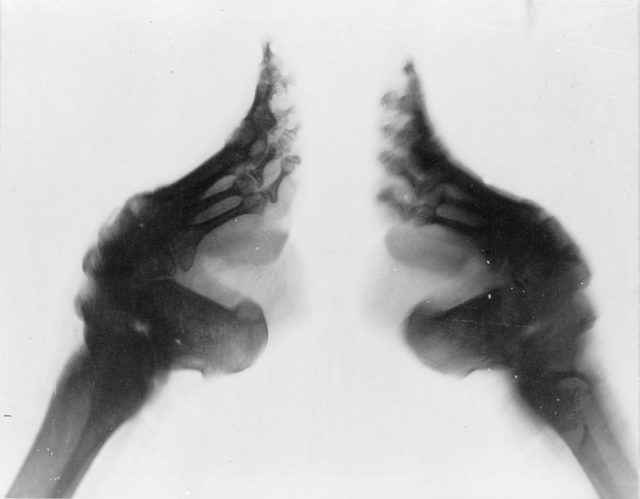
The fashion trend quickly spread across the Empire and was soon adopted by upper-class women.
At first, foot-binding wasn’t practiced among women from rural areas as they needed their feet to work in the fields.
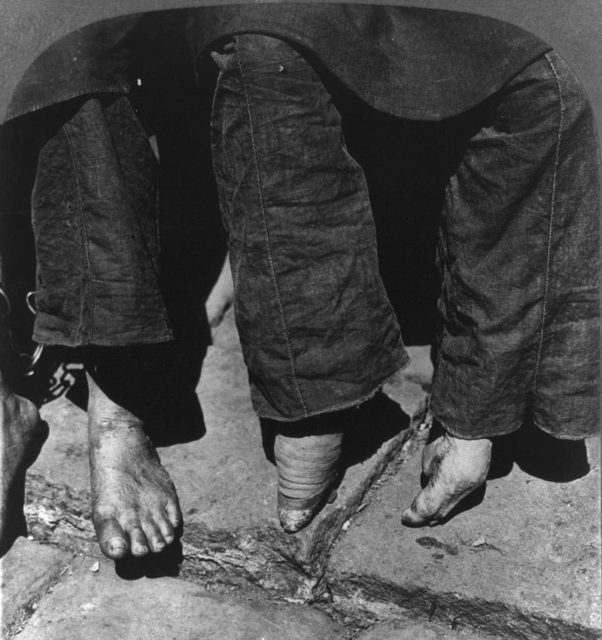
But as small feet became the fundamental standard for women’s beauty, everyone started practicing it regardless of their social stature.
It meant that women were breaking the bones in their feet and reshaping them to resemble hooves. It was believed that the smaller the feet, the better the marriage prospects.
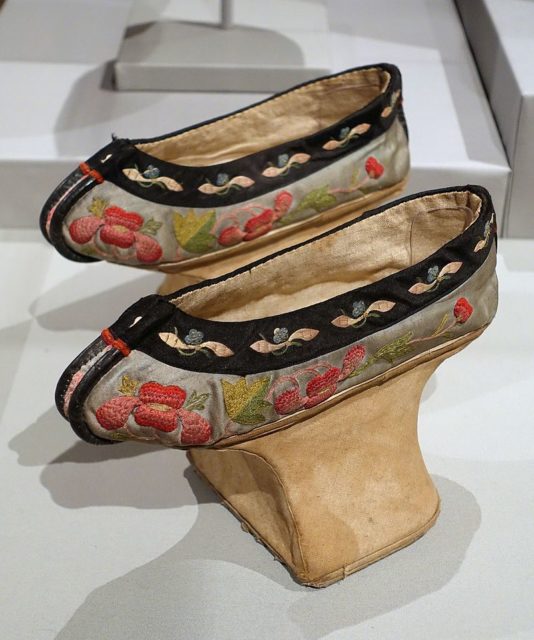
The most ideal foot size was three-inch, known as a “golden lotus”. The four-inch foot was a “silver lotus,” but anything bigger than that was “too big” and known as “iron lotus”.
Girls would undergo the painful process starting at age of four or five, and it was completed when they were nine.
The first stage of the process was plunging the girl’s feet into a hot water, clipping the toenails short, and oiling and massaging the feet.
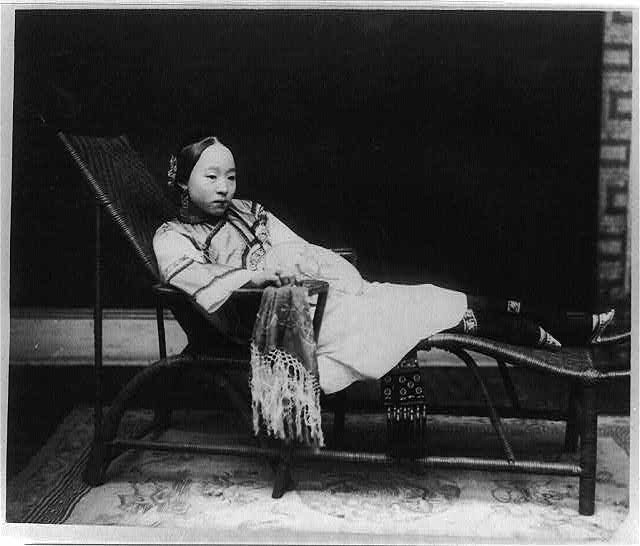
Next, all the toes, except the big toe were broken and bound flat against the sole into a triangle shape. Then, as the foot was bent double, the girl’s arch was strained.
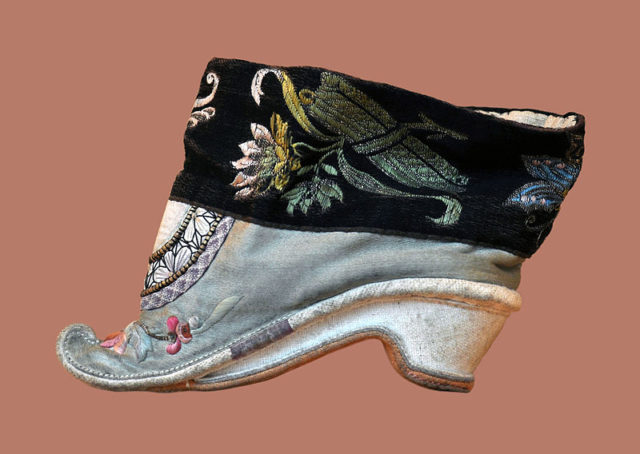
Finally, a silk strip was used to bind the foot in place. These silk wrappings were replaced frequently to prevent blood and pus from infecting the foot.
There were numerous complications that occurred during or as a result of the painful procedure such as infection, gangrene, lifelong disabilities, and sometimes death.
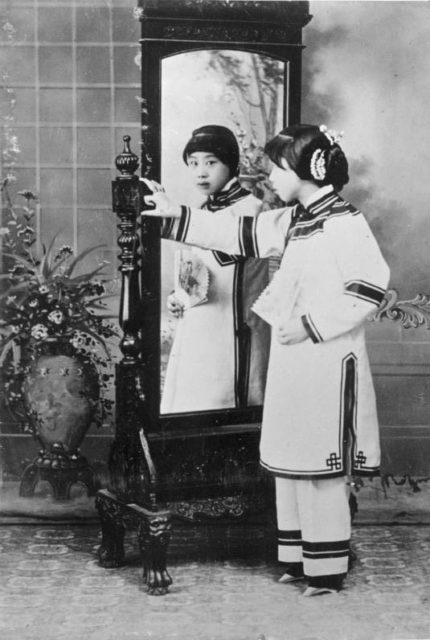
Laurel Bossen, co-author of the book Bound Feet, Young Hands, which explores and analyses the practice says: “It robbed young girls and then women throughout their lives of their ability to do other things, to move around and play, to have more choices. Of course, it’s oppressive.” Bossen conducted interviews with the last generation of feet-bound women. It was clear the foot-binding process was just as much about making women attractive for “marriage” as being economically stunted.
The custom was banned in China in 1911 but there were many women and girls who willingly went through the procedure, even though there were inspectors who often visited their homes during the 1950s and publicly humiliated any bound woman they found.
Read another story from us: Bizarre Fashion Trends Throughout the Ages
Many of the women regretted practicing the tradition. However, as one of the last women in China with bound feet, Zhou Guizhen says in an interview: “I can’t dance, I can’t move properly. I regret it a lot. But at the time, if you didn’t bind your feet, no one would marry you.”
